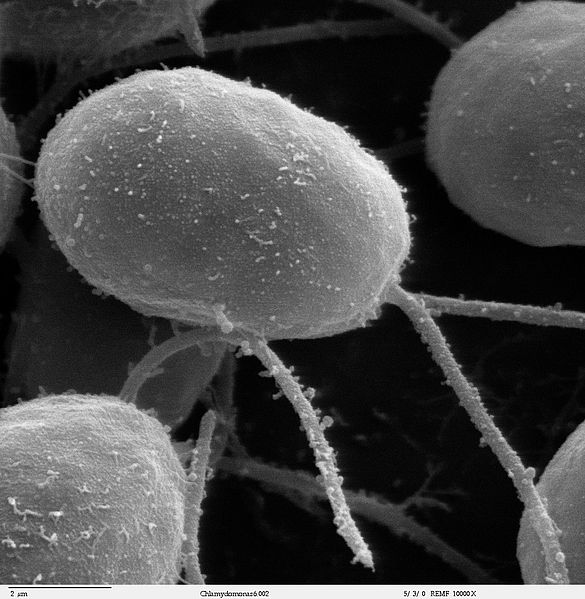Euglenids or euglenoids are one of the best-known groups of flagellates. They are excavate eukaryotes of the phylum Euglenophyta, classified as class Euglenida or Euglenoidea. Euglenids are commonly found in freshwater, especially when it is rich in organic materials, with a few marine and endosymbiotic members. Many euglenids feed by phagocytosis, or strictly by diffusion. A monophyletic group known as Euglenophyceae have chloroplasts and produce their own food through photosynthesis. This group is known to contain the carbohydrate paramylon.
Euglenid
Euglenid Body Plan (by Patrick Keeling and Yana Eglit)
Examples of euglenid diversity. 1—2. Ascoglena sp. (Euglenales); 3–4. Cryptoglena sp. (idem); 5–9, 14–15, 24–25, 27–29. Trachelomonas spp. (id.); 10. Eutreptia sp. (Eutreptiales); 11, 20. Astasia spp. (Euglenales); 12. Distigma sp. (Eutreptiales); 13. Menoid[i]um sp. (Rhabdomonadales); 16–18. Colacium sp. (Euglenales); 19, 26. Petalomonas spp. (Sphenomonadales); 21. Sphenomonas sp. (id.); 22–23. Euglenopsis sp. (Euglenales); 30. Peranema sp. (Heteronematales)
Euglena sp. (Euglenales)
A flagellate is a cell or organism with one or more whip-like appendages called flagella. The word flagellate also describes a particular construction characteristic of many prokaryotes and eukaryotes and their means of motion. The term presently does not imply any specific relationship or classification of the organisms that possess flagella. However, the term "flagellate" is included in other terms which are more formally characterized.
"Flagellata" from Ernst Haeckel's Artforms of Nature, 1904
Green algae (Chlamydomonas)






